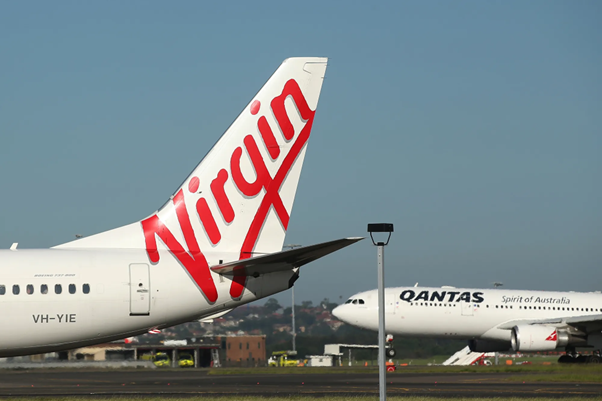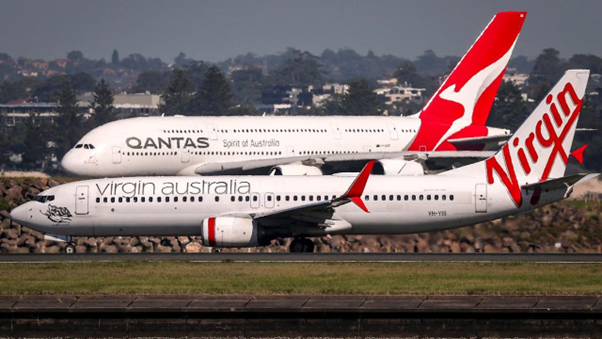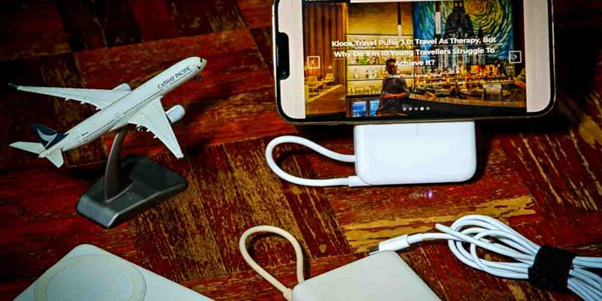Policies governing safety in aviation in Australia have switched to a stricter level, where the Virgin power bank restrictions are the new travel policy amongst passengers. This decision is taken as a result of the worldwide concerns regarding the fire risks of lithium batteries. Both Virgin Australia and Qantas have announced that there will be changes that will affect all the domestic and international flights coming up.
Starting from December, the passengers will not be able to use or charge the power banks on flights anymore. The change is intended to lower the fire hazards on the plane due to devices overheating. The airlines stated that the decision was in accordance with international safety measures, which have already been adopted by the major global carriers.

Australia tightens aviation safety with Virgin power bank restrictions announcements.
Why Have Virgin Power Bank Restrictions Been Introduced?
The Virgin power bank restrictions are born out of a safety review that has taken into account the incidents of battery fires. The use of lithium-ion batteries in the last couple of years has resulted in several aircraft cabin fires worldwide. The problem is being treated with more urgency by airlines.
Virgin Australia has made it known that it will implement its prohibition on 1 December 2025. Though power banks will be allowed in carry-on luggage, their use or charging during flights will be strictly forbidden.
The airline remarked that it is a precautionary measure aimed at ensuring the safety of the passengers during the flight. It also enables the cabin crew to act swiftly in case of a device overheating.
What Does The Qantas Power Bank Ban Mean For Passengers?
The Qantas prohibition on power banks will apply as of 15 December 2025 for Qantas, Jetstar and QantasLink flights. Each passenger is allowed to bring two power banks.
The watt-hours of each power bank cannot be more than 160. Devices exceeding this limit are strictly disallowed, no matter if they have the airline’s permission.
Power banks should be within easy reach at all times. They are not to be packed away in the overhead lockers. They must either be kept in the passenger’s pocket, under the seat, or carried by the passenger.

Qantas power bank ban starts in December, allowing two per passenger.
How Will Power Banks On Planes Be Controlled?
In accordance with the newer regulations, power banks on aeroplanes cannot be charged using either the in-seat ports or power outlets. It does not matter if the power bank is turned off or not.
Power banks are to be kept in the sight of the passengers and readily accessible at all times. This is because in case of an overheating or smoke incident, the cabin crew can handle the situation very fast.
Virgin Australia also mentioned that power banks above 100 Wh but below 160 Wh require prior airline approval. The boarding of any device without visible capacity markings may be refused. These measures are seen as preventive instead of reactive ones.
Is Passenger Convenience Being Negatively Impacted?
Some travellers may think it is a hassle, but airlines maintain that modern planes are equipped with either USB or AC charging systems as a part of the plan. Thus, aerial battery dependence is lessened.
Travellers are being urged to completely charge their gadgets before getting onto the plane. Also, the airlines think that travellers should check their device specifications before going to the airport.
The International Civil Aviation Authorities are advocating for such updates and changes globally. The Australian carriers think that the modification helps in maintaining safer conditions for long-haul travellers.

Airlines say onboard USB and AC reduce battery dependence concerns.
How Do These Measures Compare Globally?
Different international airlines have imposed similar restrictions on lithium-powered devices and accessories. This means that Australia’s aviation safety regulations are now in line with global trends.
The emphasis has been changed from reaction to prevention. Airlines acknowledge that a single in-flight battery incident can compromise the safety of all passengers.
The restrictions on Virgin power banks and the ban on Qantas power banks are signs of this global aviation movement.
Airlines have stated that they will raise passenger awareness through booking confirmations and airport announcements before the implementation.
What Should Travellers Do Before Flying?
Before travelling, passengers must verify the watt-hour rating of their power bank. The rating should be clearly labelled for easy identification.
Power banks with a rating above 160 Wh should not be taken out of the house. Limit the number of power banks that you take with you to two per person.
Hand luggage is the only place where power banks can be stored. They should never go in the checked baggage, no matter what the situation is.
If you have any doubts, it is better to contact the airline before coming to the airport. This will help in avoiding delays at the security screening or boarding points.
Also Read: Qantas Drops Economy Plus Bombshell with 40% More Legroom
FAQs
Q1: After December 2025, will I be allowed to carry power banks on aeroplanes?
Yes. Up to two power banks are allowed in hand luggage, provided that they meet size and capacity specifications.
Q2: Does the Virgin power bank restriction concern only domestic flights?
No. The same applies to both domestic and international Virgin Australia flights.
Q3: Is the power bank restriction at Qantas a case of Jetstar and QantasLink being included?
Yes. The restriction is in place for all Qantas Group airlines.
Q4: Will I be able to charge my phone during the flight?
Yes. The aircraft comes with charging ports for phones and tablets. Only the power banks are not allowed to be charged.












